March 03 - 10, 2025: Weekly economic update
Key market updates

MACROECONOMIC STATISTICS
INFLATION
- Core Consumer Price Index (CPI) (m/m) (January): 0.4% (prev: 0.2%);
- Consumer Price Index (CPI) (m/m) (January): 0.5% (prev: 0.4%);
- Core Consumer Price Index (CPI) (y/y) (January): 3.3% (prev: 3.2%);
- Consumer Price Index (CPI) (y/y) (January): 3.0% (prev: 2.9%).
INFLATION EXPECTATIONS (MICHIGAN)
- 12-month expected inflation (February): 4.3%, prev: 4.3%;
- 5-year expected inflation (February): 3.5%, prev: 3.3%.
GDP (BEA – U.S. Bureau of Economic Analysis) (q/q) (Q) (Preliminary Estimate)
- 2.3% (prev: 3.1%)
The GDPNow* indicator of the Federal Reserve Bank of Atlanta: -2.4%.
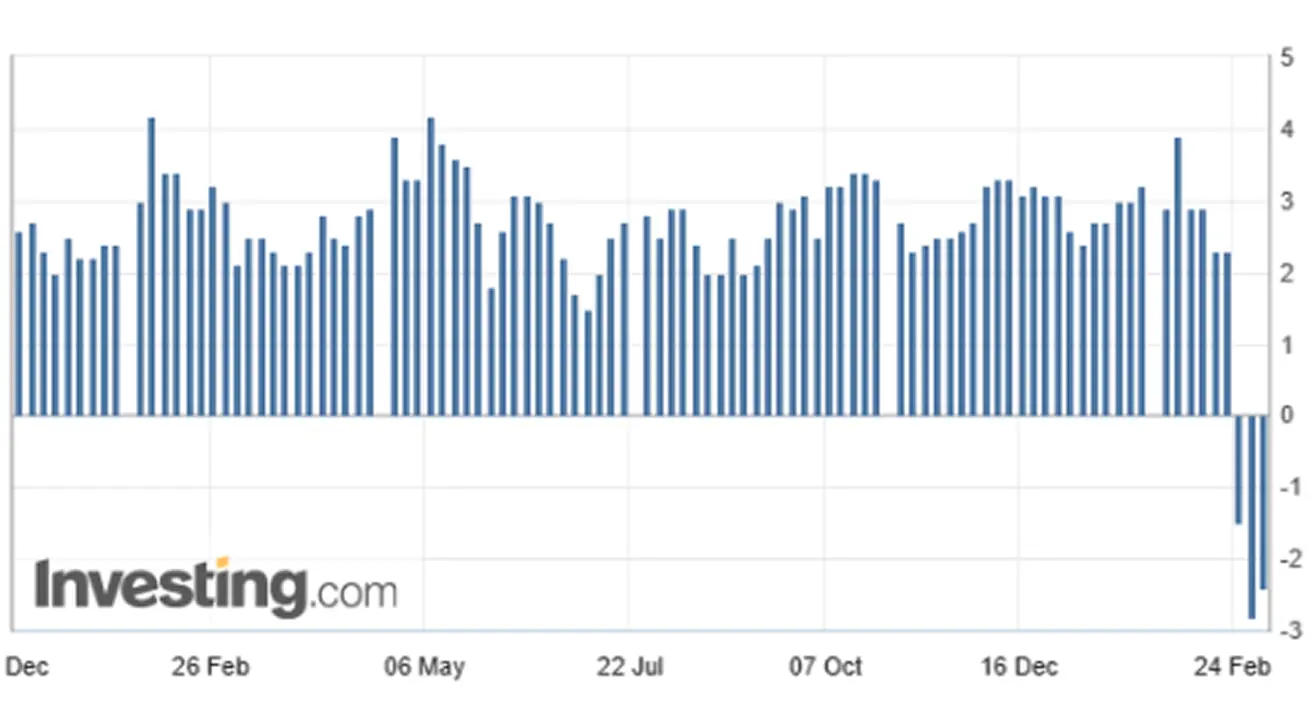
*The growth rate of actual gross domestic product (GDP) is a key indicator of economic activity, but the official estimate is being delayed in publication. This GDPNow forecasting model provides the "current" version of the official estimate before it is published, estimating GDP growth using a methodology similar to that used by the U.S. Bureau of Economic Analysis.
BUSINESS ACTIVITY INDEX (PMI)
- Services Sector (February): 51 (prev: 49.7);
- Manufacturing Sector (February): 52.7 (prev: 51.6);
- S&P Global Composite (February): 51.6 (prev: 50.4).
LABOR MARKET:
- Unemployment Rate (February): 4.1% (prev: 4.0%);
- The change in non-agricultural employment for February stands at 151K(prev 81K);
- Average Hourly Earnings (February, y/y): 4.0% (prev: 3.9%).
MONETARY POLICY
- Federal Funds Rate (EFFR): 4.25%–4.50% (dotted line);
- Fed Balance Sheet (blue): $6.756 trillion (vs previous week: $6.766 trillion)
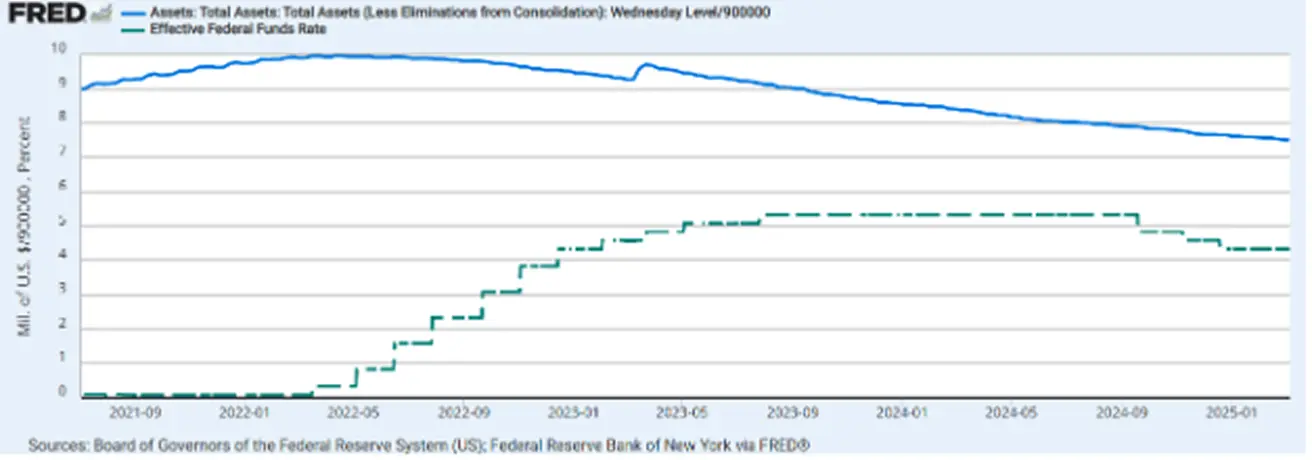
MARKET FORECAST FOR RATE
Today:
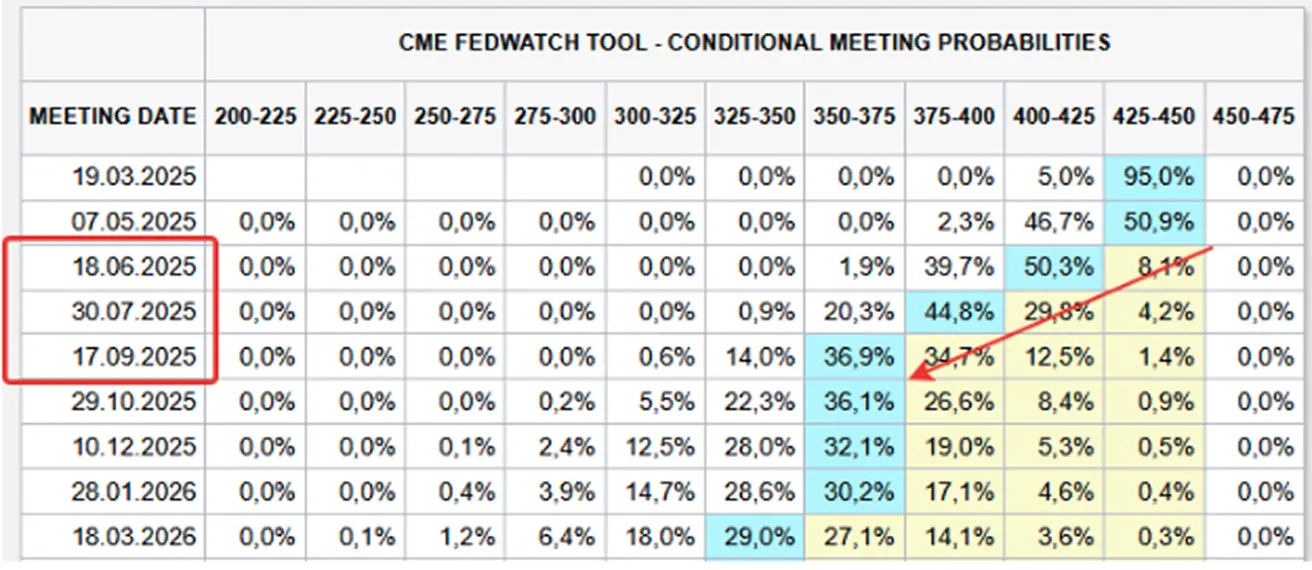
А week earlier:
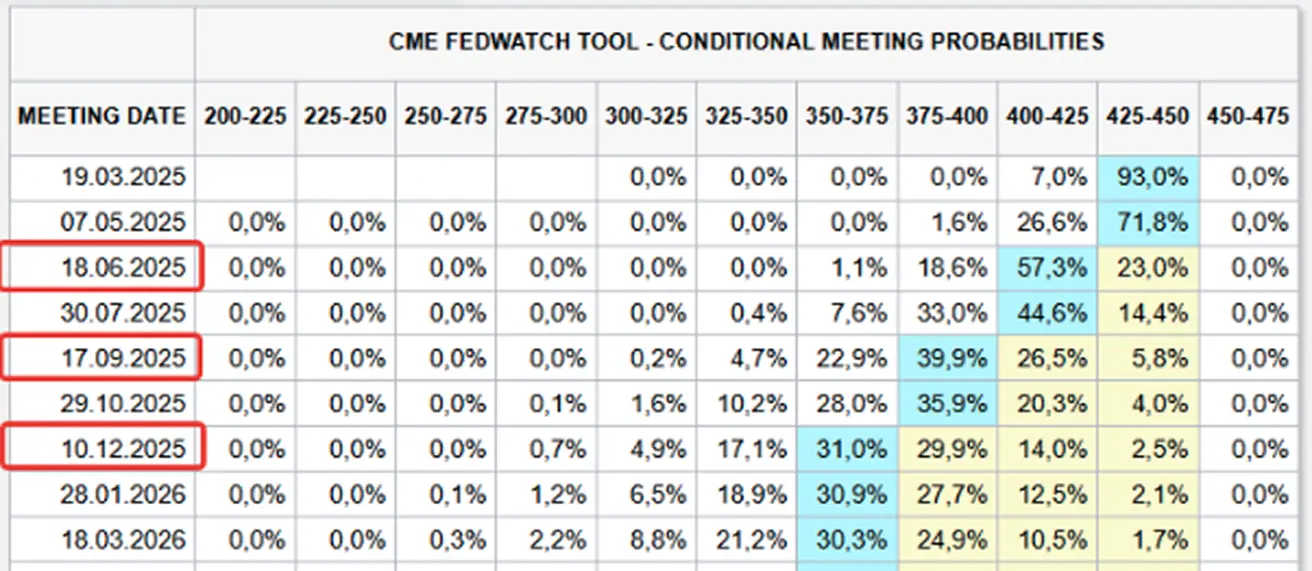
Commentary:
The past week saw a global escalation in the trade war, heightened political uncertainty, and a sharp decline in equity markets. Despite these concerns, business activity indices remain above the 50 threshold, signaling continued economic expansion. The services sector, which in the previous release dipped below 50 for the first time in two years, did not continue contracting.
Labor Market Overview Non-farm payroll employment rose by 151,000 in February, while the unemployment rate increased slightly to 4.1%. Job gains were concentrated in healthcare, financial activities, transportation, warehousing, and social assistance, while federal government employment declined. The Atlanta Fed's GDPNow model has been projecting a 2.4% economic contraction for the third consecutive week.
Macroeconomic Outlook The next official GDP release by the Bureau of Economic Analysis is also expected to confirm a slowdown, and markets have already priced in this expectation. In the Eurozone, macroeconomic data remains broadly positive.
- The ECB cut rates from 2.9% to 2.65%.
- Inflation and unemployment have declined while GDP and business activity continue to expand.
- However, European bond markets declined after Germany announced €500 billion in new debt issuance to support public spending, with defense expected to grow fastest. In China, business activity remains in expansion, but CPI data signals deflation as weak consumer demand persists. This is likely to require further monetary stimulus from the PBoC.
Trade War Developments Last week, Trump imposed new 25% tariffs on Mexico and Canada and additional tariffs on China. However, many Canadian and Mexican goods were later granted a temporary exemption for one month. In response, China, Mexico, and Canada have already introduced retaliatory tariffs. Market sentiment remains highly uncertain regarding the scope and escalation of the trade war.
Key Takeaways from the Fed's Monetary Policy Report and Powell's Remarks:
- The Federal Reserve sees no urgency and prefers to wait for clarity.
- The path to 2% inflation is expected to be uneven.
- Uncertainty surrounding policy changes and their economic impact remains high.
- Most indicators suggest a resilient and broadly balanced labor market.
- The U.S. economy remains strong despite elevated uncertainty.
- Recent data indicate a potential slowdown in consumer spending growth.
- Short-term inflation expectations have risen, influenced by tariffs.
- Policy uncertainty under the Trump administration continues to weigh on economic outlooks.
- The Fed's policy stance is not predetermined—it may maintain restraint if inflation slows or ease policy if the labor market unexpectedly weakens or inflation undershoots expectations.
- The zero lower bound is no longer the baseline scenario.
- "We will consider allowing moderate inflation overshoots." This effectively implies a higher inflation target, suggesting that zero interest rates are off the table and that the neutral rate can be anchored around 3% for the EFFR in the long run.
- "There is no need to redefine price stability. We should not react to short-term price fluctuations."
- "It is still unclear what will be tariffed and for how long. If this escalates into a series of actions, tariffs increase, or expectations shift, the Fed must respond accordingly."
- The economy does not require immediate action from the Fed.
- Fed officials are revising potential growth estimates upward.
Market Expectations – Fed Policy & Rate Cuts According to FedWatch futures:
- Markets anticipate three consecutive 25 bps rate cuts from June to August.
- The expected Fed Funds target range for 2025 is 3.50–3.75%.
- Investors are pricing in a more aggressive monetary easing cycle from the Fed.
MARKET CAP PERFORMANCE
Last week, the stock market was red across all sectors except for introductory materials and consumer staples. The median market decline stood at 2.28%.
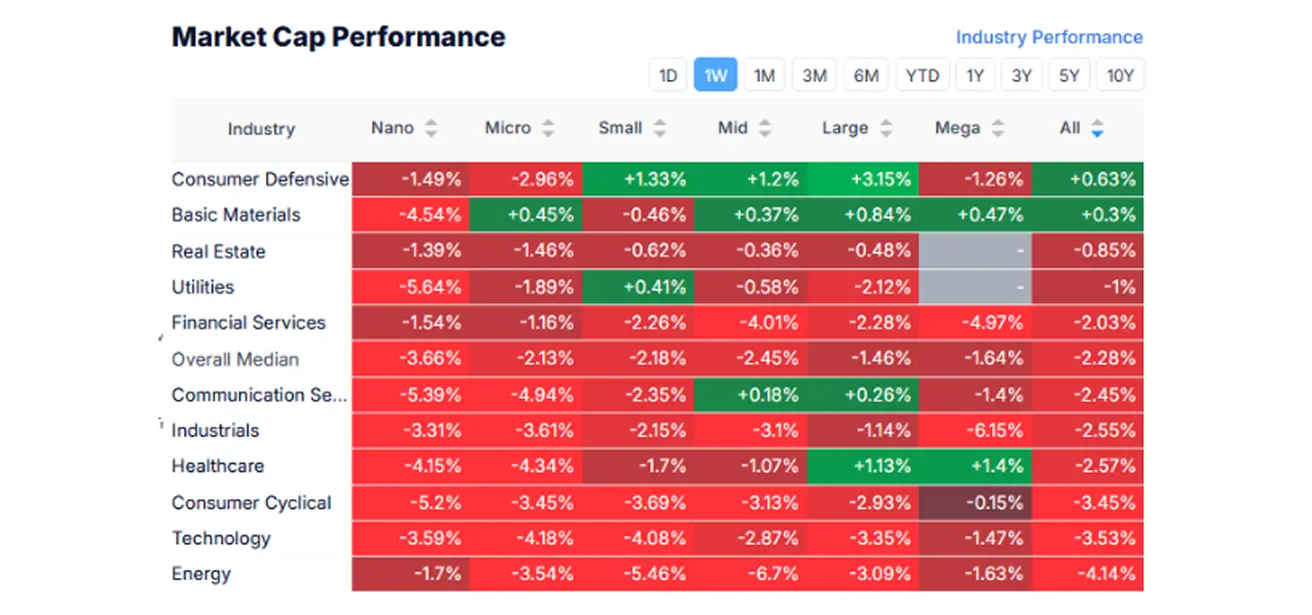 YTD (Year-to-Date: the period from the beginning of the year to the present date).
YTD (Year-to-Date: the period from the beginning of the year to the present date).
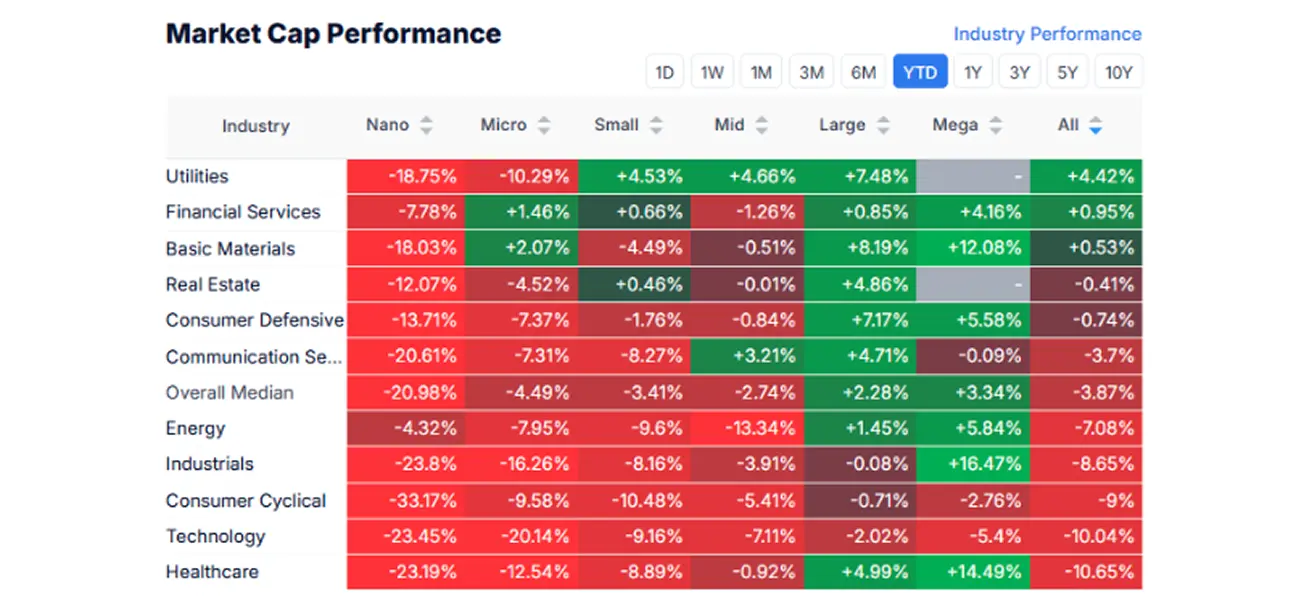
SP500
Weekly performance: -5.71% (week's closing at 5,614.55). Year-to-date growth in 2025: -4.89%.
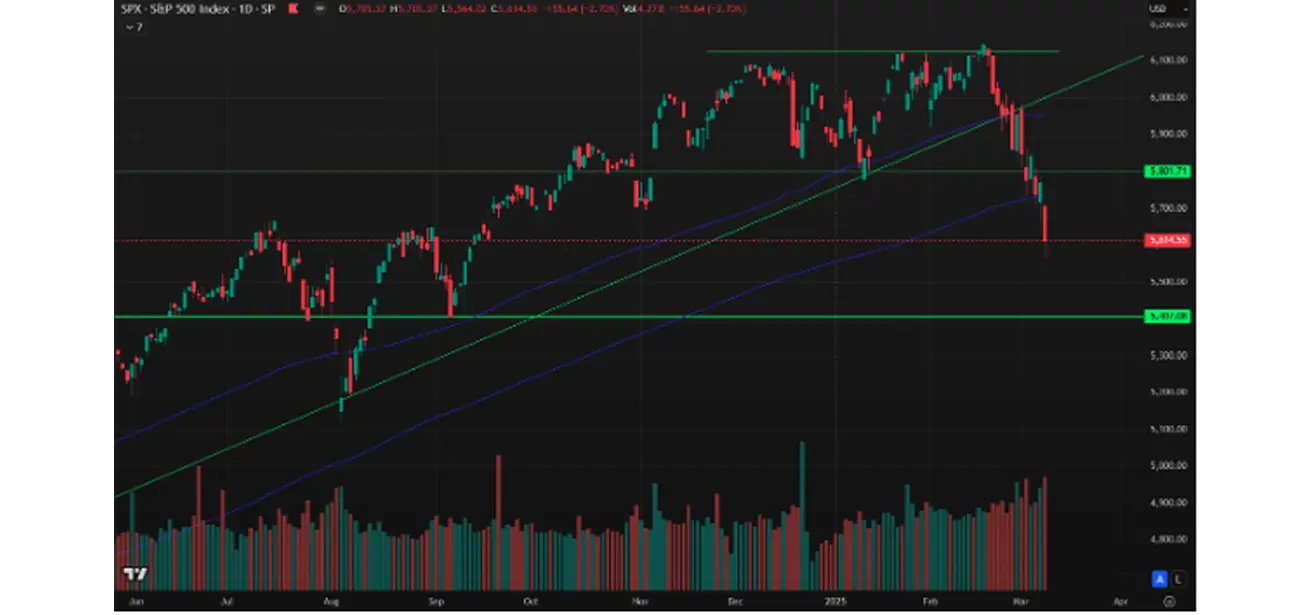
NASDAQ100
Nasdaq 100: Weekly performance: -6.96% (week’s closing at 19,430.95). Year-to-date decline in 2025: -8.00%.
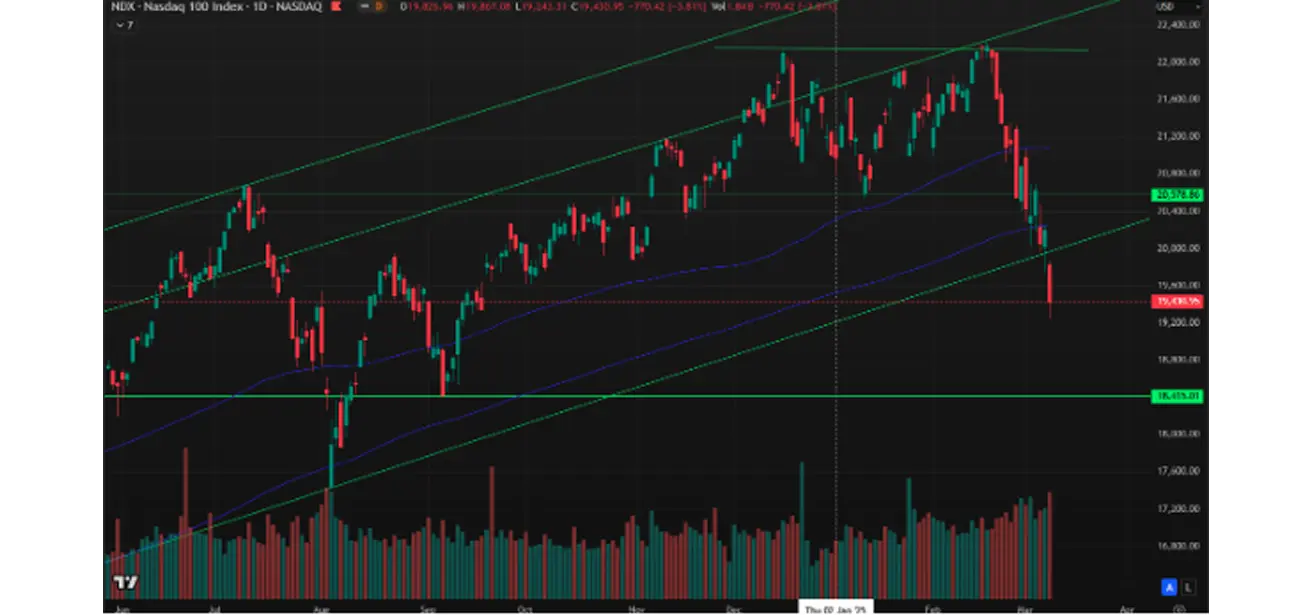
BOND MARKET
The bond market ended the week lower, with yields rising.
Treasury Bonds 20+ (ETF TLT): -1.49% (week’s closing at $90.11). Year-to-date performance in 2025: +3.70%.
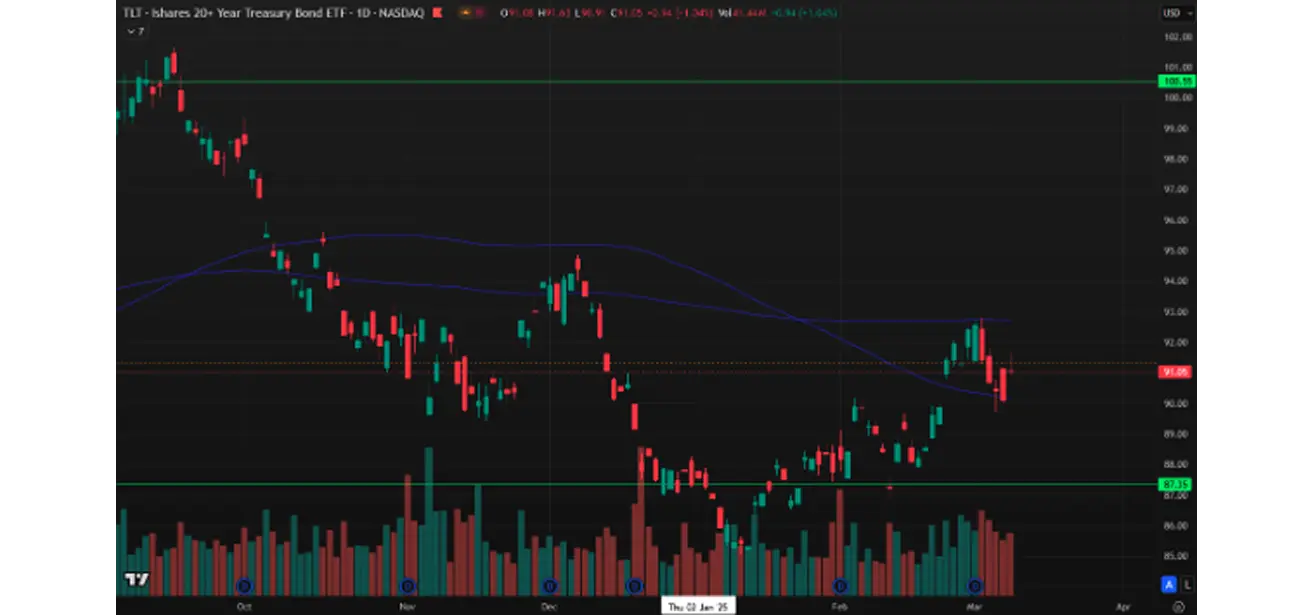
YIELDS AND SPREADS
Yields and Spreads 2025/02/17 vs 2024/02/14
- Market Yield on U.S. Treasury Securities at 10-Year Constant Maturity: 4,193%;
- ICE BofA BBB US Corporate Index Effective Yield: 5,38%.
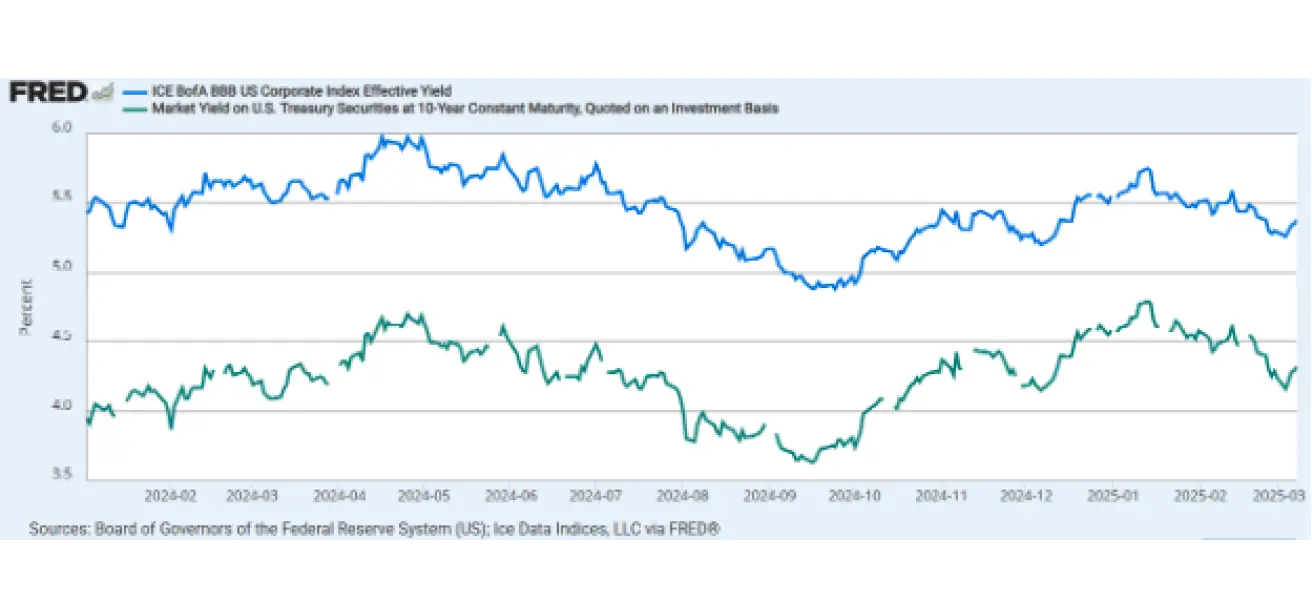
The spread between 10-year Treasuries and BBB-rated corporate bonds has remained unchanged despite risk-off sentiment, indicating that the bond market does not yet perceive an increase in credit risk for investment-grade issuers. The yield spread between 10-year and 2-year U.S. government bonds stands at 31.0 vs. 22.2 basis points, reflecting the difference in returns between long-term and short-term debt.
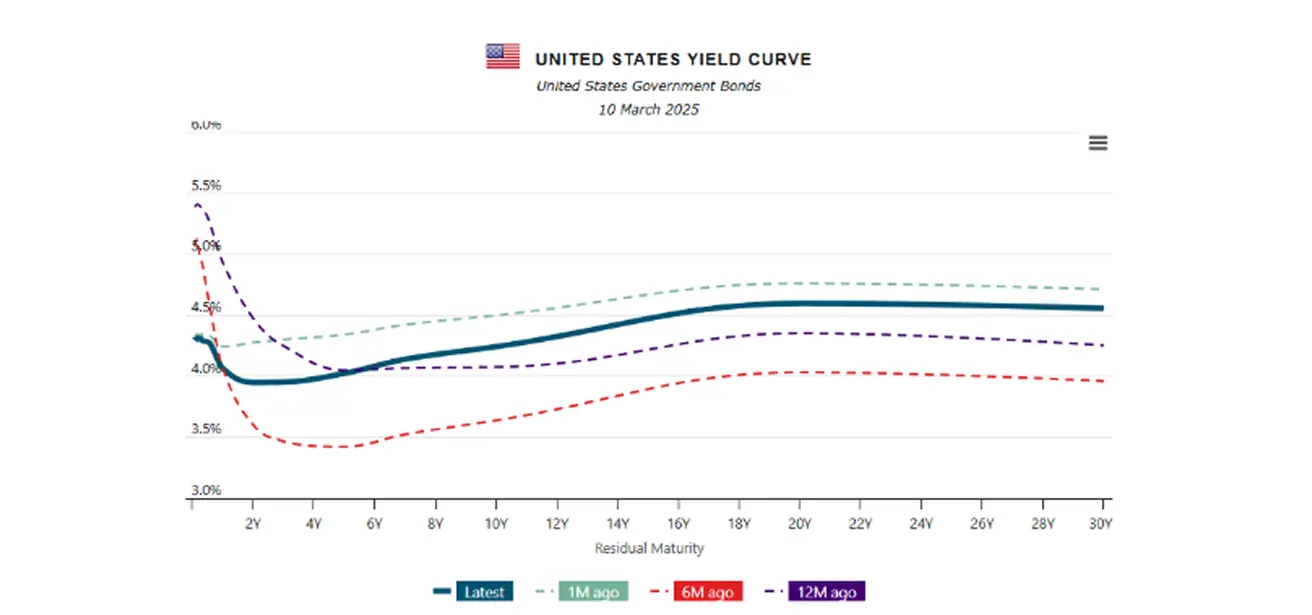
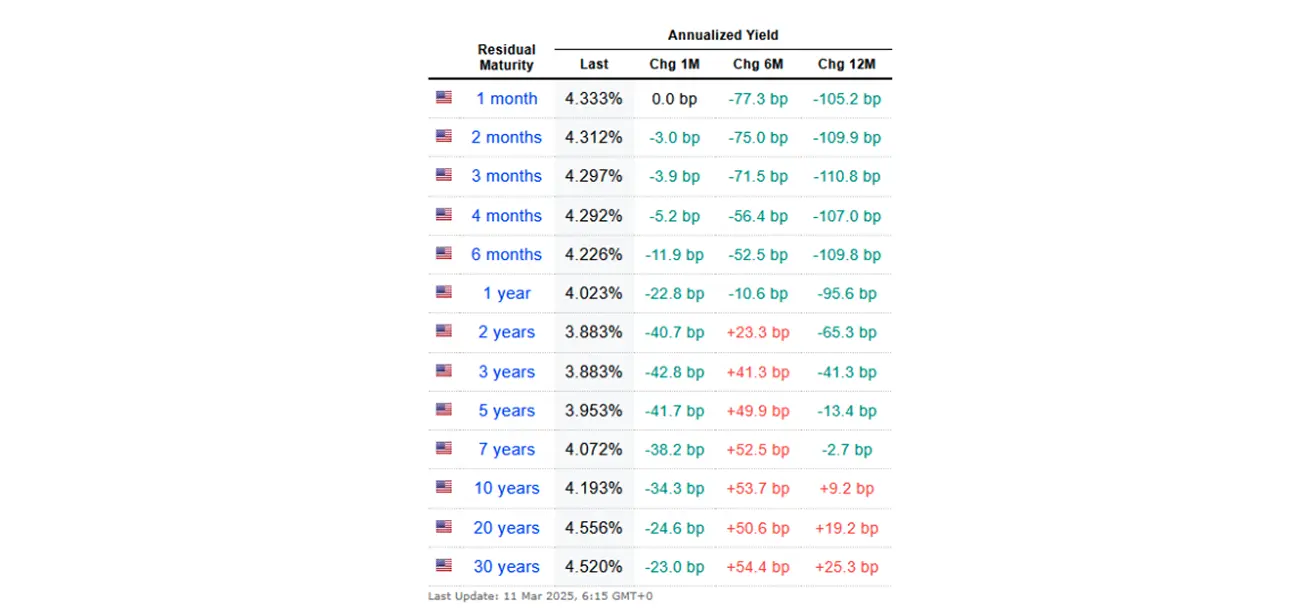
GOLD FUTURES (GC)
Gold futures: +1.76%, weekly close at $2,917.7 per troy ounce. Year-to-date 2025: +10.48%.
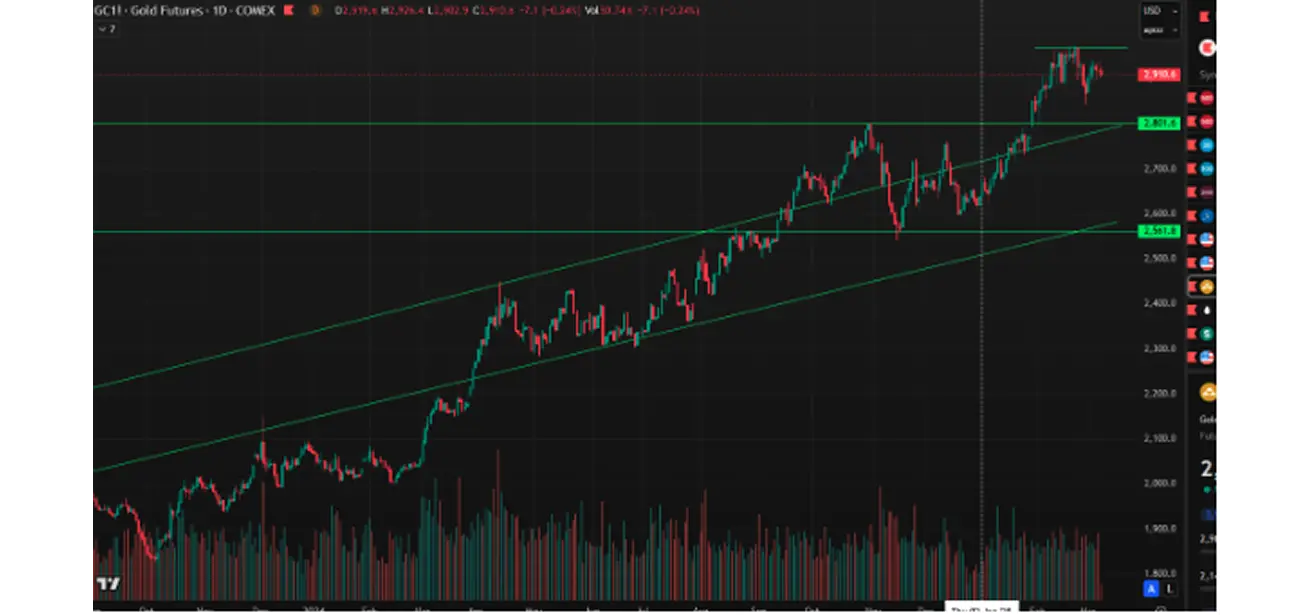
DOLLAR INDEX FUTURES (DX)
U.S. Dollar Index futures (DX): -3.40%, weekly close at 103.855. Year-to-date 2025: -4.13%.
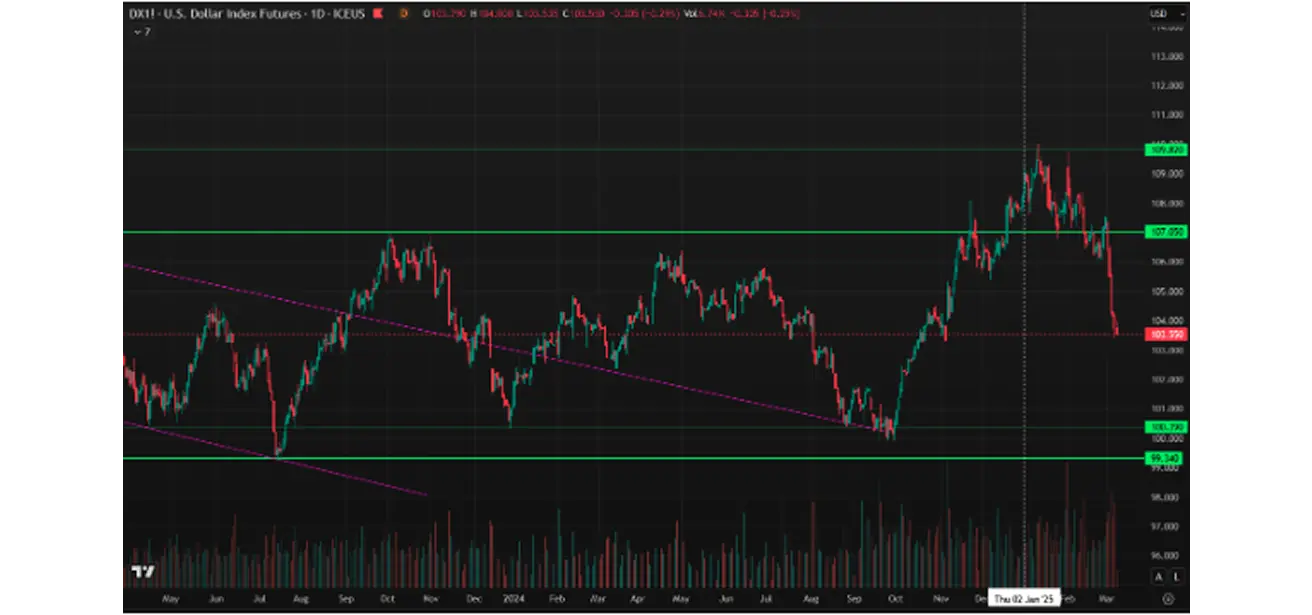
OIL FUTURES
Weekly performance: -4.15%, closing at $67.05 per barrel. Year-to-date performance: -6.68%.
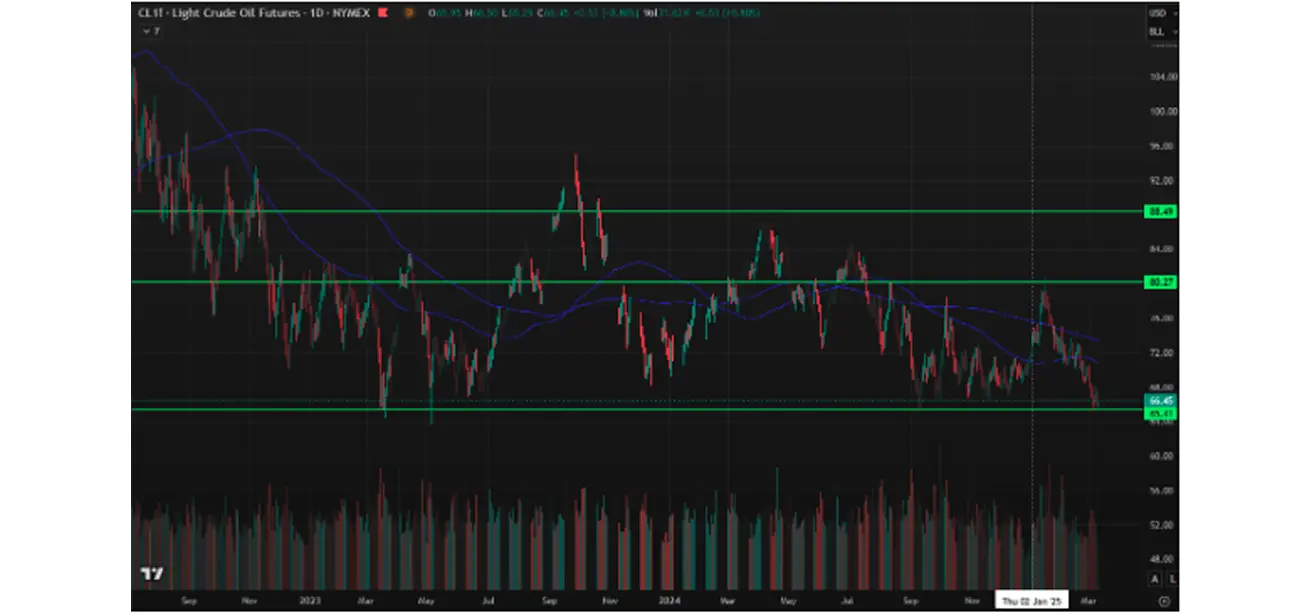
BTC FUTURES
Weekly performance: -6.40%. Year-to-date performance in 2025: -16.67%.
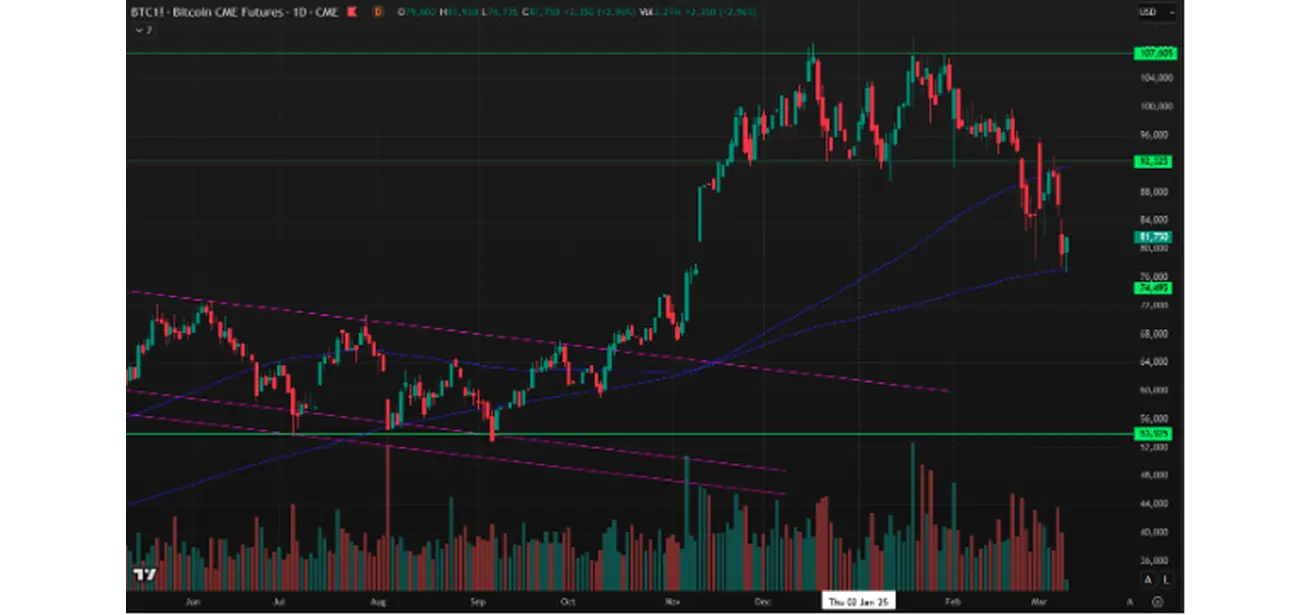
ETH FUTURES
Weekly performance: -16.14%. Year-to-date performance in 2025: -44.50%.
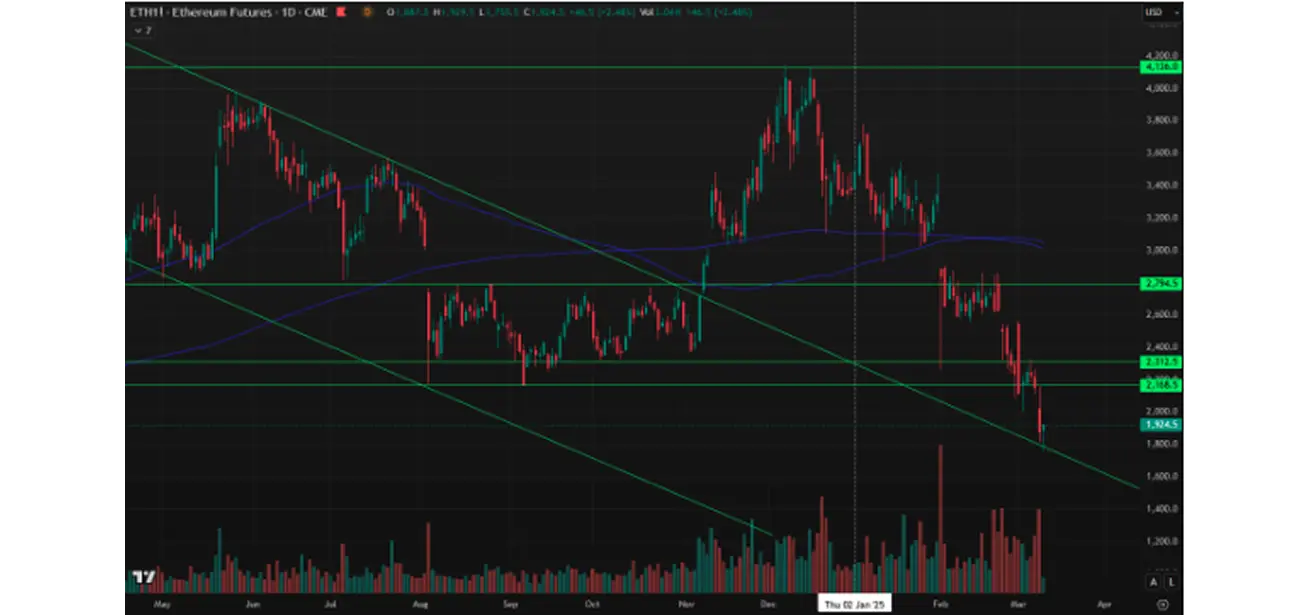
Cryptocurrency market capitalization declined to $2.66 trillion (down from $3.09 trillion a week earlier) (coinmarketcap.com). Bitcoin dominance: 61.0% (previously 60.4%), Ethereum: 8.7% (previously 10.5%), others: 30.2% (unchanged).
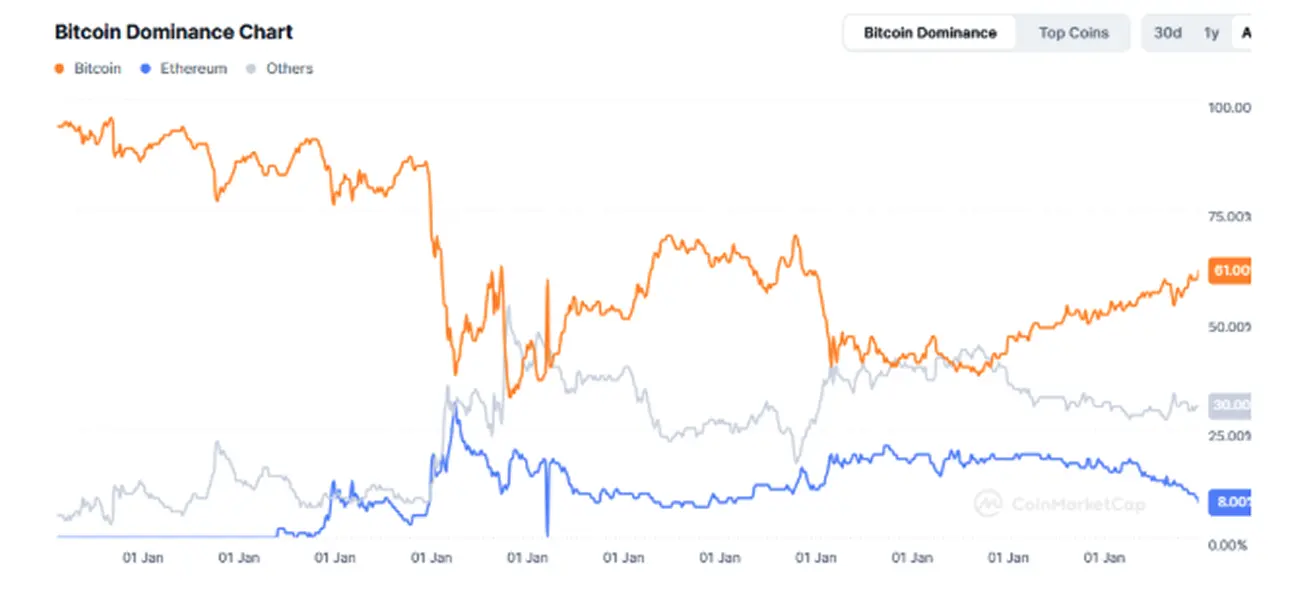
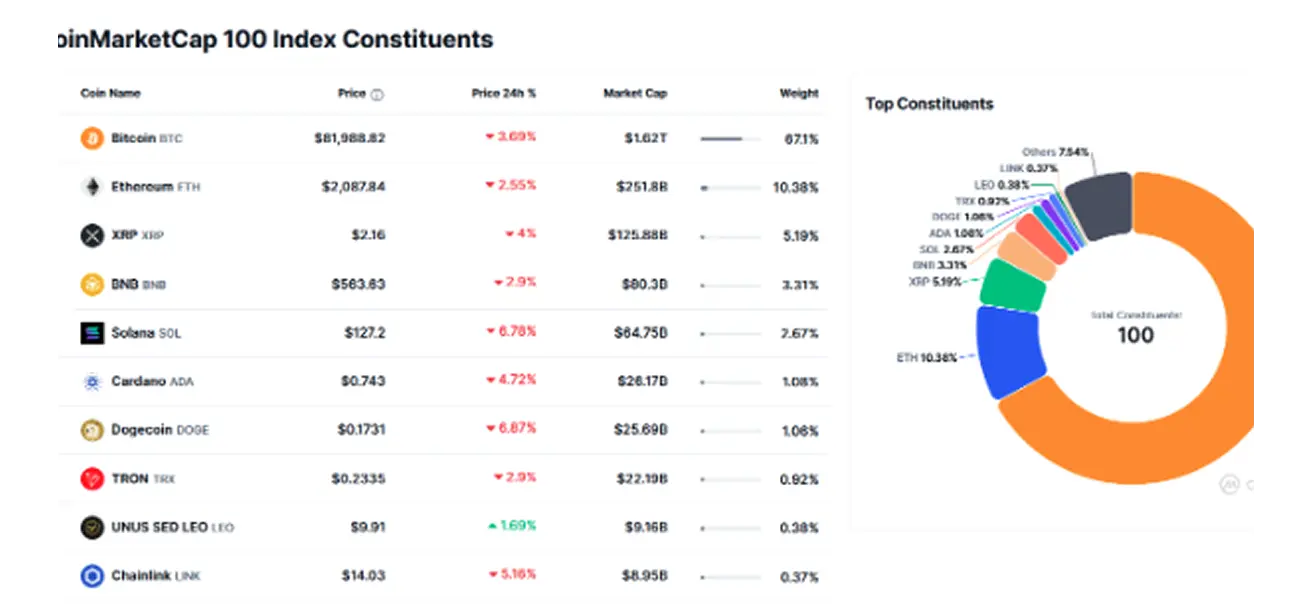
News
Trump Signs Executive Order to Establish a Strategic Bitcoin Reserve The reserve will be capitalized using Bitcoin, which is already owned by the federal government and was previously confiscated through criminal or civil proceedings. Additionally, the U.S. will refrain from selling any cryptocurrency. The order authorizes the Secretaries of Treasury and Commerce to develop "budget-neutral strategies" for acquiring additional Bitcoin, provided that it does not impose additional costs on American taxpayers. While the announcement lacks concrete plans for Bitcoin purchases, making it sound reserved, it is still a long-term positive signal for Bitcoin as it formalizes an accumulation strategy. Furthermore, other countries may follow this precedent.
European Central Bank Targets CBDC Rollout by October 2025
 Қазақша
Қазақша